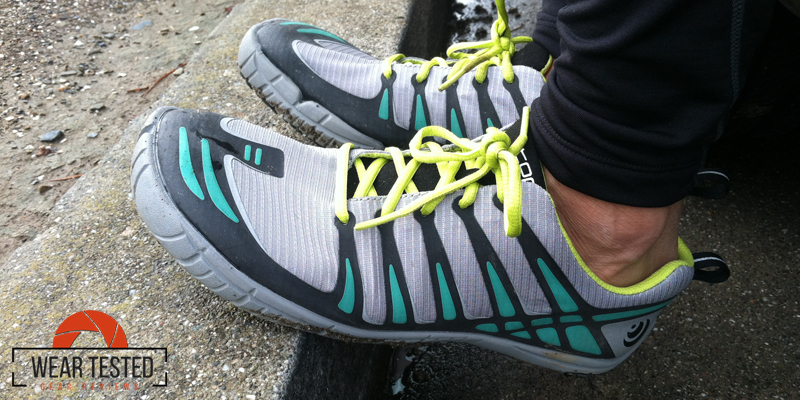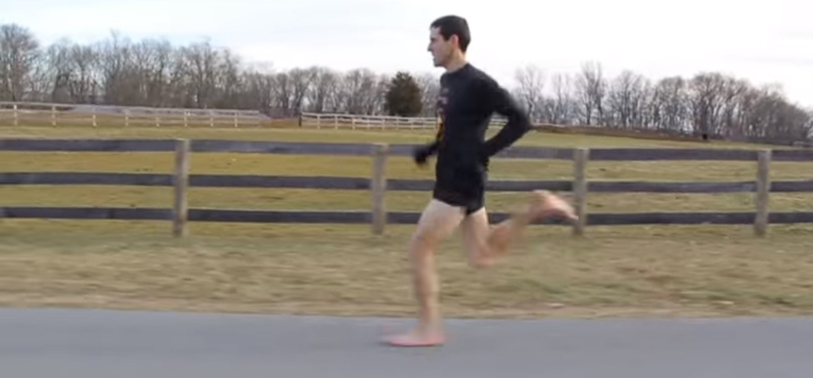In the April 2016 issue of BJSM (British Journal of Sport & Exercise Medicine) journal findings, Prospective Comparison of Running Injuries Between Shod and Barefoot Runners (Allison R Altman; Irene S Davis; Br J Sports Med. 2016;50(8):476-480), confirmation of what I have always believe since starting this website 6 years ago – that long term running in traditional (cushion, high drop) running shoes causes knee and back injuries. Here’s a synopsis of what the findings are.
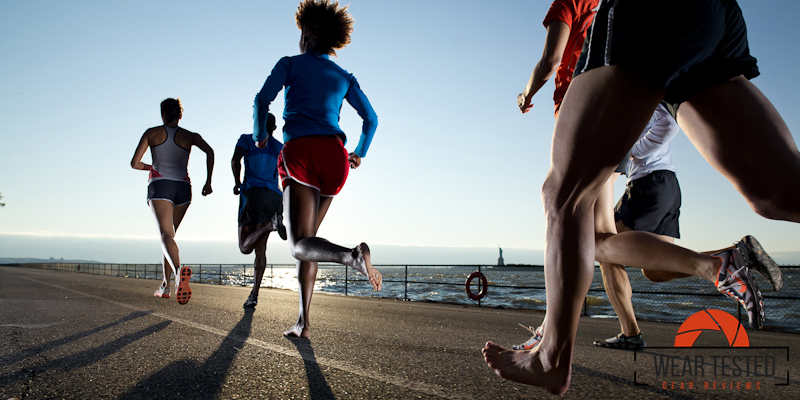
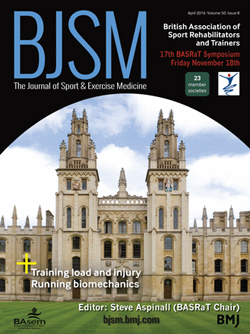 Background Info
Background Info
The purpose of the study was to compare the incidence and rate of injuries between shod and barefoot runners.
Study Method
A prospective survey was conducted over the course of a year among 201 (107 barefoot and 94 shod) adult runners. Information regarding injuries and mileage was logged monthly using a custom, web-based database program. The number of injured runners, number of injuries per runner and injury rates were compared between habitual barefoot and habitual shod runners. Both musculoskeletal and plantar surface injuries were assessed.
Study Results
Statistically fewer overall, diagnosed, musculoskeletal injuries/runner were noted in the barefoot group. Barefoot runners sustained a statistically greater number of injuries to the plantar surface of the foot. The descriptive analysis suggests a greater number of calf injuries, but lower number of knee and hip injuries in the barefoot group. Additionally barefoot runners reported less plantar fasciitis than the shod group.
Study Conclusion
Barefoot running is associated with fewer overall musculoskeletal injuries/runner, but similar injury rates. A larger scale cohort is needed to more accurately assess differences in individual injuries between these two groups.
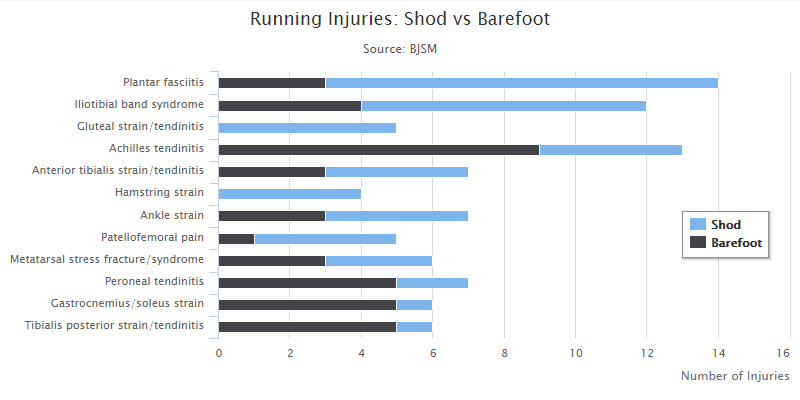
The paper also noted that barefoot running is also associated with a shorter stride length and higher cadence. The reduction of stride length has been shown to reduce hip and knee loads. Hip adduction, which is linked to some of the most common running injuries, including stress fractures, iliotibial band (IB) syndrome, and patellofemoral pain syndrome is also reduced. Strengthening of the arch musculature has been shown to reduce arch collapse as indicated by a reduced navicular drop and increased arch height index. As plantar fasciitis has been associated with weak arch muscles, strengthening of these muscles should help to reduce the risk of this common injury. However, barefoot running is not without risk. The increased load to the calf and arch associated with a barefoot, forefoot strike pattern places additional stress to these areas. The plantar surface is also at greater risk for injury.
Conclusions
These findings suggest that habitual barefoot running does not increase overall injury incidence, and may be a safe alternative for injured runners if transitioned properly. Additionally, barefoot running may serve as protection against knee injuries, the most common injuries sustained by runners.
Gastrocnemiussoleus strains are greater in barefoot runners, highlighting the need to adequately strengthen these muscles; plantar fasciitis was less common, suggesting that barefoot running itself may strengthen the arch musculature.
Our recommended solution? Minimalist running shoes from Altra Running, Topo Athletic, Skora Athletics, Xero Shoes, VIVOBAREFOOT, Vibram Five Fingers, Skechers Performance, and Shamma Sandals. Protect your bare feet with minimal footwear but keeping a natural or barefoot running form.
